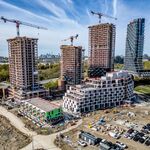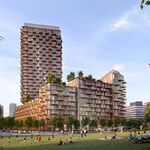Whoops, I meant to say plan new lines with the option for express track. However, one problem I see is that the only place that might benefit from express tracks now, it's too late and prohibitively expensive to build. So how would one ever plan that a line may eventually need express service (much like who would have imagined a subway crossing the Don Valley).
On the other hand, the DRL is a viable alternative. And if it were not, then the analysis would result in build express tracks. But just say one day we reach the point again that the DRL is exceeding capacity. Do we look back and say we should have built express tracks or do we build another relief line? It almost sounds like the LRT vs. subway debate doesn't it?





